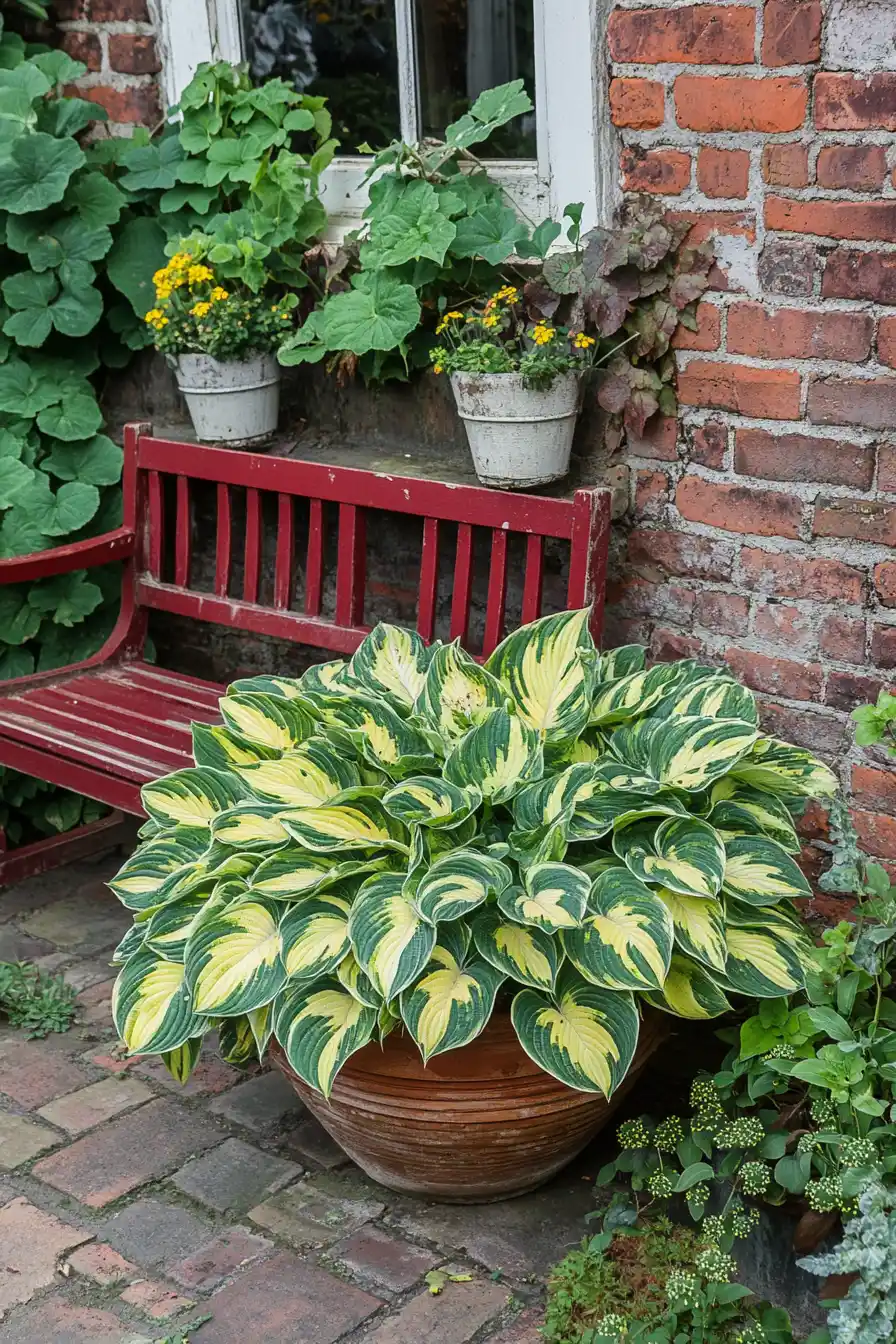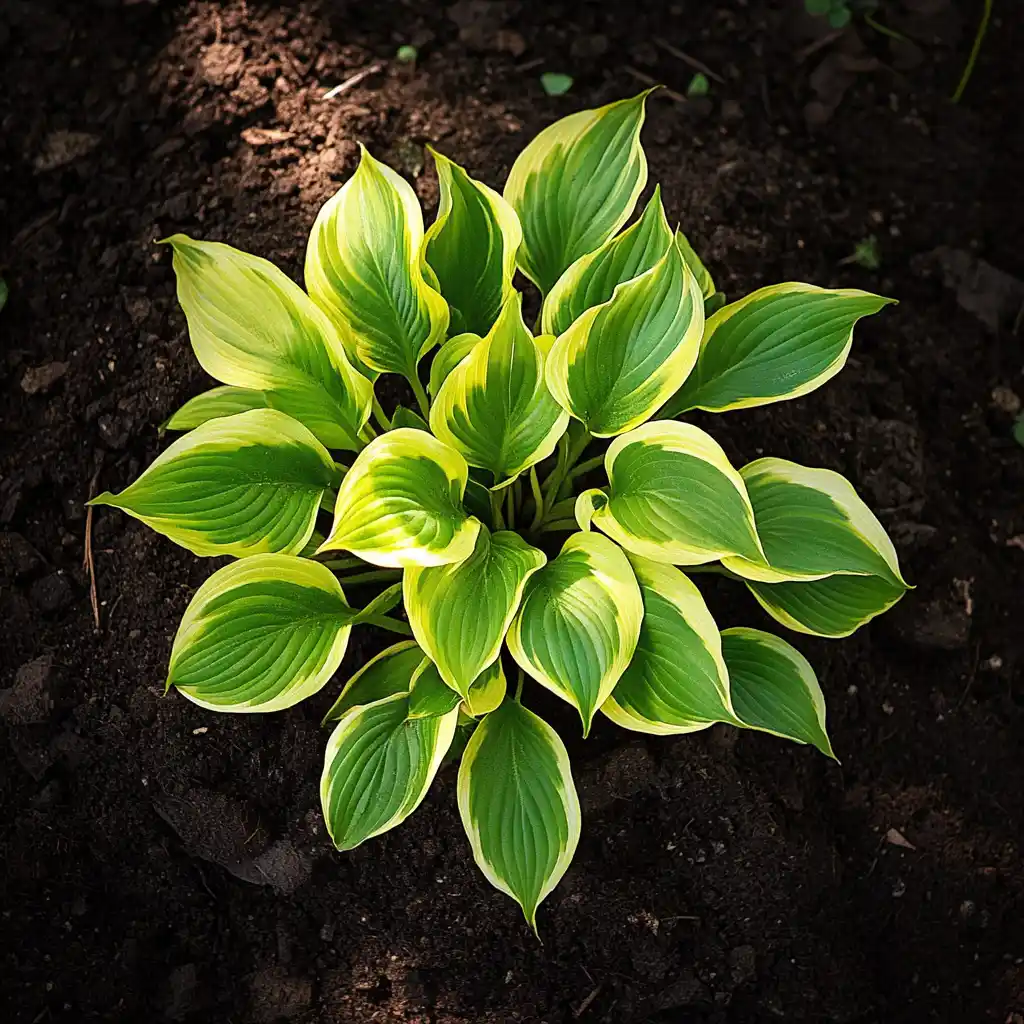If you’re dreaming of lush, low-maintenance hosta gardens or want to explore stunning hostas landscaping ideas, you’re in the right place. These shade-loving perennials are known for their bold foliage, soothing textures, and incredible adaptability — all of which make hosta gardens a go-to feature in many backyard designs. It’s no surprise that hostas were named Perennial of the Year by the National Garden Bureau, recognizing their value in both traditional and modern hostas landscaping.
From sprawling shaded beds to compact patio containers, hosta gardens offer flexibility for gardeners of all skill levels. Whether you’re planning a full redesign or simply adding hostas to an existing layout, understanding their specific care needs is key to long-term success. In this guide, we’ll explore five essential hosta-growing tips — giving you the tools to grow healthier, more vibrant plants while elevating the overall beauty of your landscape design. For more shady inspiration, don’t miss our guide to the best perennials for shade.
Table of Contents
🌿 1. You Can Plant Hostas in Spring or Fall
When planning your hosta gardens or designing your hostas landscaping, timing is key. The best windows for planting hostas are spring and fall — when soil conditions are ideal for strong root development. In spring, wait until the ground begins to warm, giving young plants the opportunity to settle before the heat of summer. Fall is also a smart choice, allowing hostas to establish roots before winter dormancy sets in.
✅ Can You Plant Hostas in Summer?
Absolutely — but with caution. Summer planting can be successful if you take a few extra steps:
- Choose live, green plants in containers — never dormant bare roots.
- Water consistently to prevent heat stress, especially in the first few weeks.
- Plant in dappled shade or protected areas to shield them from intense sun.
Keep in mind: while hostas are famously resilient, they need a little TLC during hot months to avoid transplant shock or drying out. With proper care, even summer-planted hostas can thrive and contribute beautifully to your shaded beds or patio displays.
☀️ 2. Different Hostas Have Different Light Preferences
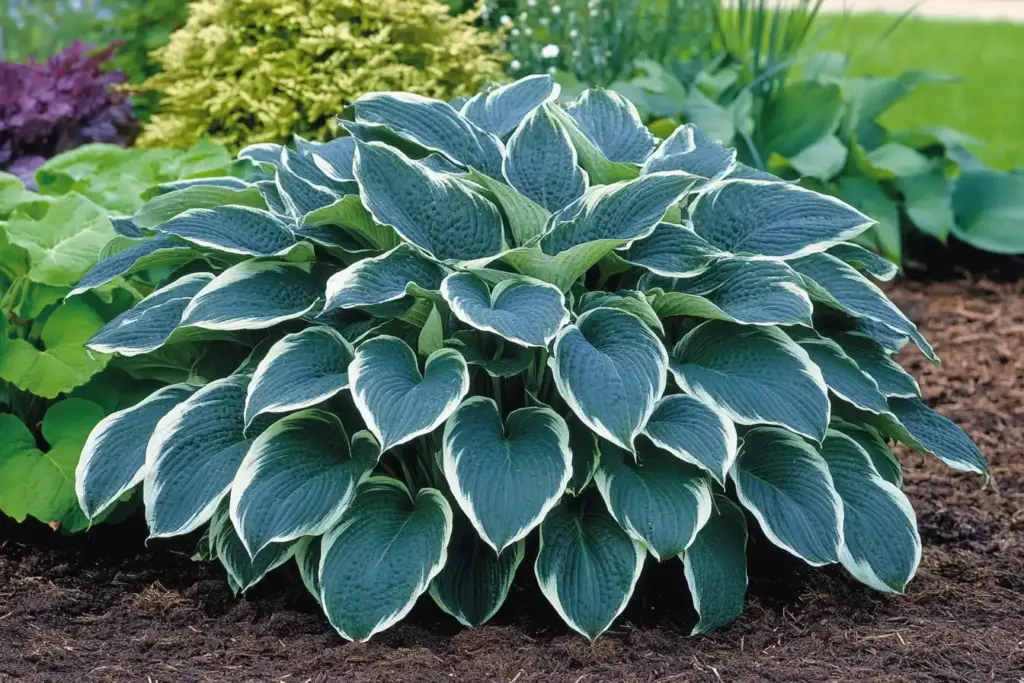
One of the biggest misconceptions in hosta gardens and hostas landscaping is that all hostas thrive in deep shade. While it’s true that hostas are generally shade-loving, their light preferences actually vary depending on the cultivar.
🌑 Shade vs. Sun: Know Your Hosta Type
- Blue-leaf hostas prefer deeper shade. Too much sun can cause their signature blue tone to fade.
- Gold-leaf and variegated hostas can tolerate more sunlight, especially in the morning hours when the rays are less intense.
- Fragrant hostas, which produce sweet-scented blooms, perform best in partial sun — the extra light encourages stronger fragrance and more blooms.
🚫 What About Full Shade?
While hostas will grow in full shade, they may not thrive. Expect slower growth, smaller leaves, and fewer blooms. For a vibrant, full look, aim for dappled light or morning sun with afternoon shade.
Understanding the light needs of different hostas is crucial when designing a diverse and eye-catching layout. Proper placement ensures not only healthier plants but also a more layered and dynamic hosta garden aesthetic.
🌱 3. Hostas Love Rich, Moist Soil
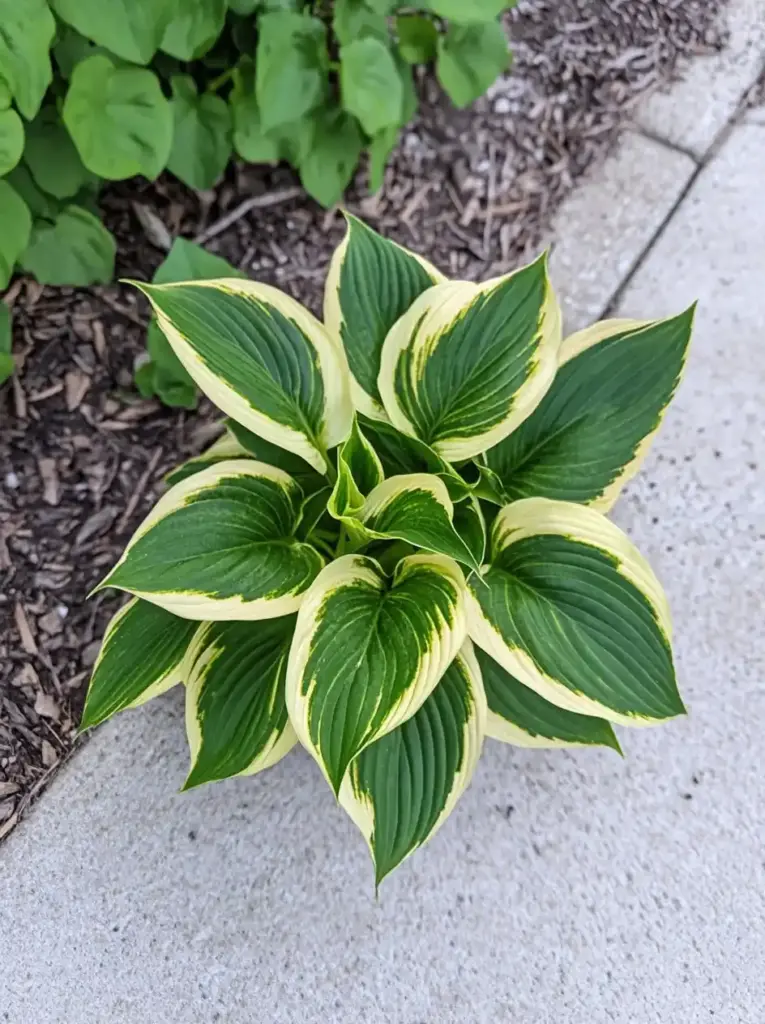
To get the most out of your hosta gardens or hostas landscaping, you’ll need to start from the ground up — literally. While hostas are often praised for being low-maintenance, they’re particular about one thing: soil quality. Rich, consistently moist soil is the secret to lush foliage and strong growth.
🧱 Struggling Soils? Here’s What to Know:
- Sandy soil drains too quickly, leaving roots thirsty.
- Heavy clay can suffocate roots due to poor drainage.
If you’re working with either, don’t worry — hostas are forgiving when given the right amendments. Blend in compost, well-rotted manure, or organic matter at planting time to improve structure and moisture retention.
🌿 Don’t Forget to Mulch
Each year, apply a generous layer of mulch to help retain moisture and enrich the soil. Choose materials like:
- Aged bark
- Leaf mold
- Compost
Avoid acidic mulches like fresh wood chips, which can harm delicate hosta roots over time.
Keeping the soil consistently moist — but never soggy — will support those broad, textured leaves that make hosta gardens so appealing. In drought conditions or overly dry beds, hostas may become dull, sparse, or even crispy around the edges.
🌸 4. Interplant Hostas With Other Moisture-Loving Plants
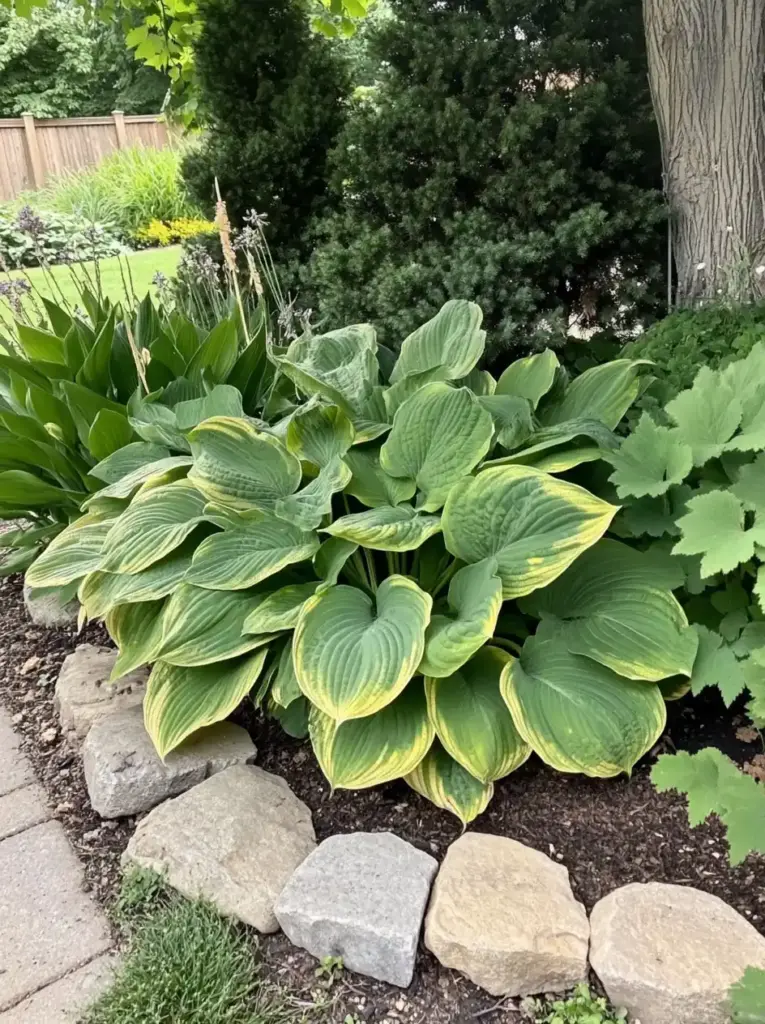
Designing beautiful hosta gardens or planning eye-catching hostas landscaping doesn’t mean sticking to just one plant. In fact, hostas truly shine when paired with other shade-loving, moisture-thriving plants that complement their texture and color.
🌿 Great Companion Plants for Hostas
Here are some excellent plant partners that enjoy similar conditions:
- Pulmonaria – Adds early-season blooms and spotted leaves
- Heuchera (Coral Bells) – Offers bold leaf colors for contrast
- Camassias – Adds vertical bloom spikes to balance low hosta mounds
- Ligularia – Bold foliage and bright yellow flowers for late-season color
- Shuttlecock ferns – Bring elegance and fine texture
- Irises – Especially moisture-tolerant varieties like flag irises
- Spirea and candelabra primulas – Add soft flowers and structural balance
🎨 Pro Tips for Visual Harmony
- Mix variegated and solid-color hostas for layered visual interest — but don’t overdo it. Too many variegated types can feel chaotic.
- Group in odd numbers (like 3s or 5s) to create natural-looking clusters.
- Repeat colors or shapes across a bed to create a cohesive design.
By interplanting thoughtfully, you create not just a hosta patch — but a living composition. These pairings also encourage biodiversity and attract pollinators, giving your hosta garden both beauty and purpose.
🪴 5. Hostas Can Be Grown in Containers
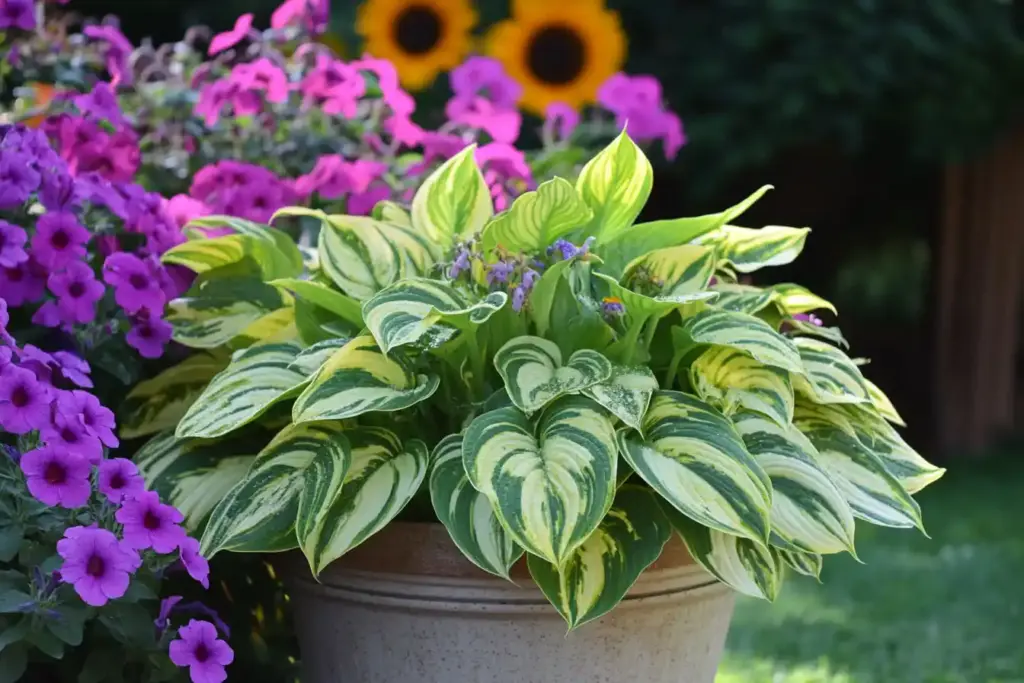
Limited on space? Battling deer in your garden? Don’t worry — hosta gardens aren’t just for the ground. With the right setup, hostas can thrive in containers on patios, balconies, or shaded entryways. Container gardening also lets you showcase these leafy beauties up close, where their textures and colors can be fully appreciated.
🏡 Why Grow Hostas in Pots?
- Perfect for small spaces like courtyards or apartment balconies
- Easier to manage moisture levels
- Keeps deer and slugs at bay when raised off the ground
- Great for experimenting with color and size combinations
🪴 Choosing the Right Hosta Varieties for Containers
Smaller cultivars are best suited for containers. Look for varieties labeled as:
- Mini (under 6″ tall)
- Small (7–10″ tall)
Here are some popular picks:
- Blue Mouse Ears
- Church Mouse
- Little Missie
- Ruffled Mouse Ears
- Missie Mouse
If you’re using larger containers, even medium-sized hostas can do well — just be sure the container is deep enough and offers good drainage.
💧 Container Care Tips
- Water regularly, especially in warmer months — potted soil dries faster.
- Keep containers in shaded or semi-shaded spots
- Refresh the soil annually and use compost-rich potting mix
With a bit of attention, container-grown hostas can be just as lush and vibrant as their in-ground counterparts — making them a smart, stylish option for flexible hostas landscaping.
❓ FAQ: Hosta Gardens and Hostas Landscaping
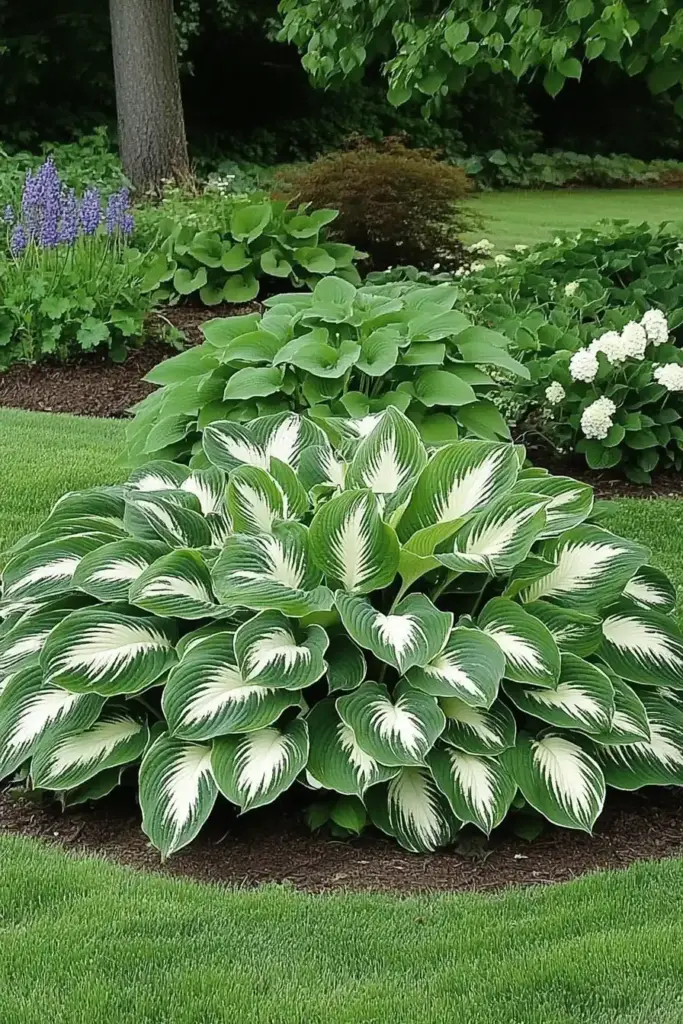
🌞 Can hostas grow in full sun?
Most hostas prefer shade or dappled light, but some varieties — especially gold-leaf and variegated types — can tolerate morning sun. Avoid planting them in intense afternoon sunlight, which can scorch the leaves.
🌱 How long does it take for hostas to mature?
Hostas take 3–7 years to reach full maturity, depending on the variety. Mini and small cultivars mature faster (around 3–4 years), while large or giant hostas may take up to 7 years to reach their full size.
🌧️ How often should I water hostas?
Hostas like consistently moist soil, especially during their growing season (spring through fall). In dry or hot weather, water deeply 2–3 times a week. Container-grown hostas may need daily watering during summer.
🐌 How do I protect my hostas from slugs?
Slugs are common pests in hosta gardens. Use organic methods like:
- Sprinkling diatomaceous earth or crushed eggshells around the base
- Setting out beer traps
- Applying iron phosphate slug bait (pet-safe)
🪴 Can hostas survive winter in containers?
Yes — but they need protection. In cold zones, either:
- Move the pots into a garage or unheated shed, or
- Bury the containers in the ground to insulate the roots
Always choose frost-resistant pots and avoid overwatering in winter.
🧱 What soil do hostas prefer?
Hostas thrive in rich, well-draining, organic soil. Amend clay or sandy soils with compost, leaf mold, or aged bark. Avoid fresh wood chips, which may be too acidic.
🌿 Conclusion
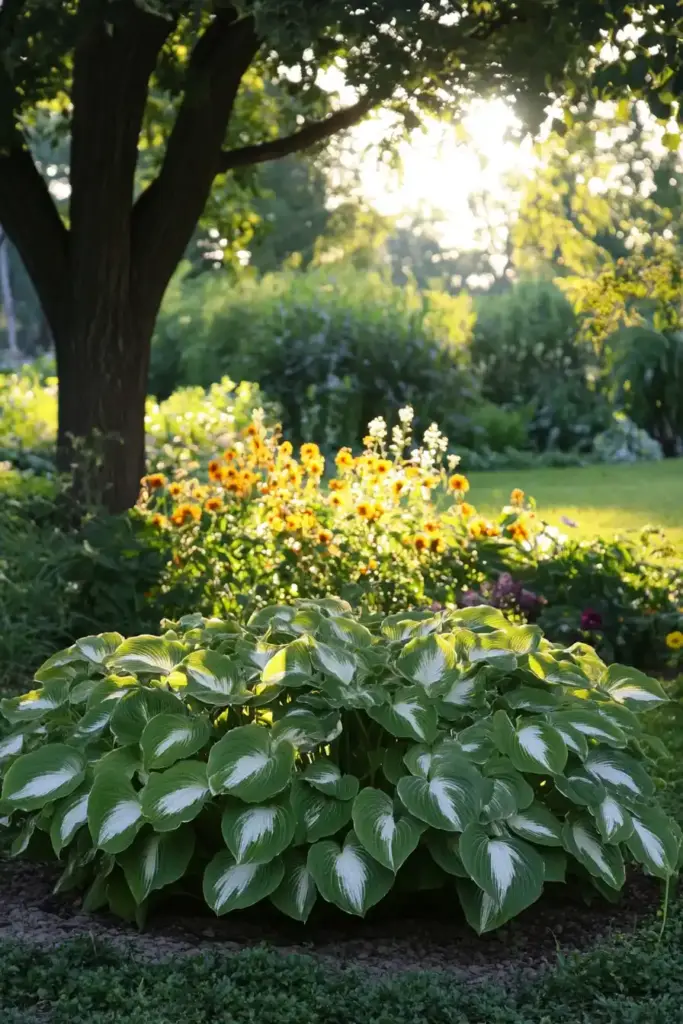
Whether you’re designing expansive hosta gardens or exploring artistic hostas landscaping to add texture and tranquility to your yard, these foliage-forward perennials offer unmatched beauty and versatility. With just the right combination of rich soil, steady moisture, and filtered sunlight, your hostas can thrive in everything from shaded pathways to container setups on patios.
Looking for inspiration to take your shade space further? Pair your hostas with other favorites from our guide to perennials for low-maintenance backyards or incorporate them into shady flower beds for an effortlessly lush look.
Whether you’re just starting out or fine-tuning your existing layout, hosta gardens and hostas landscaping offer a reliable, stylish way to elevate your outdoor space — one bold leaf at a time.

